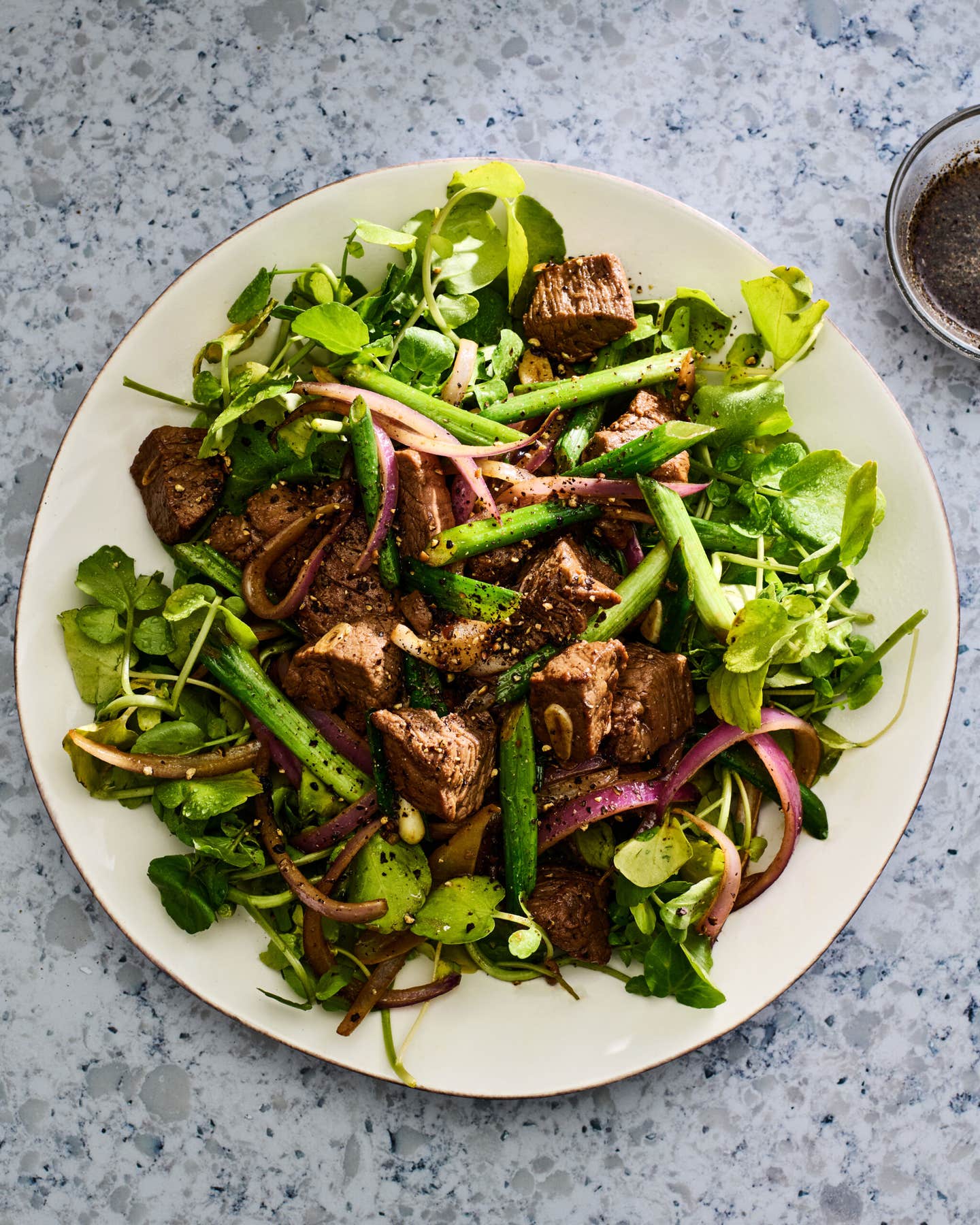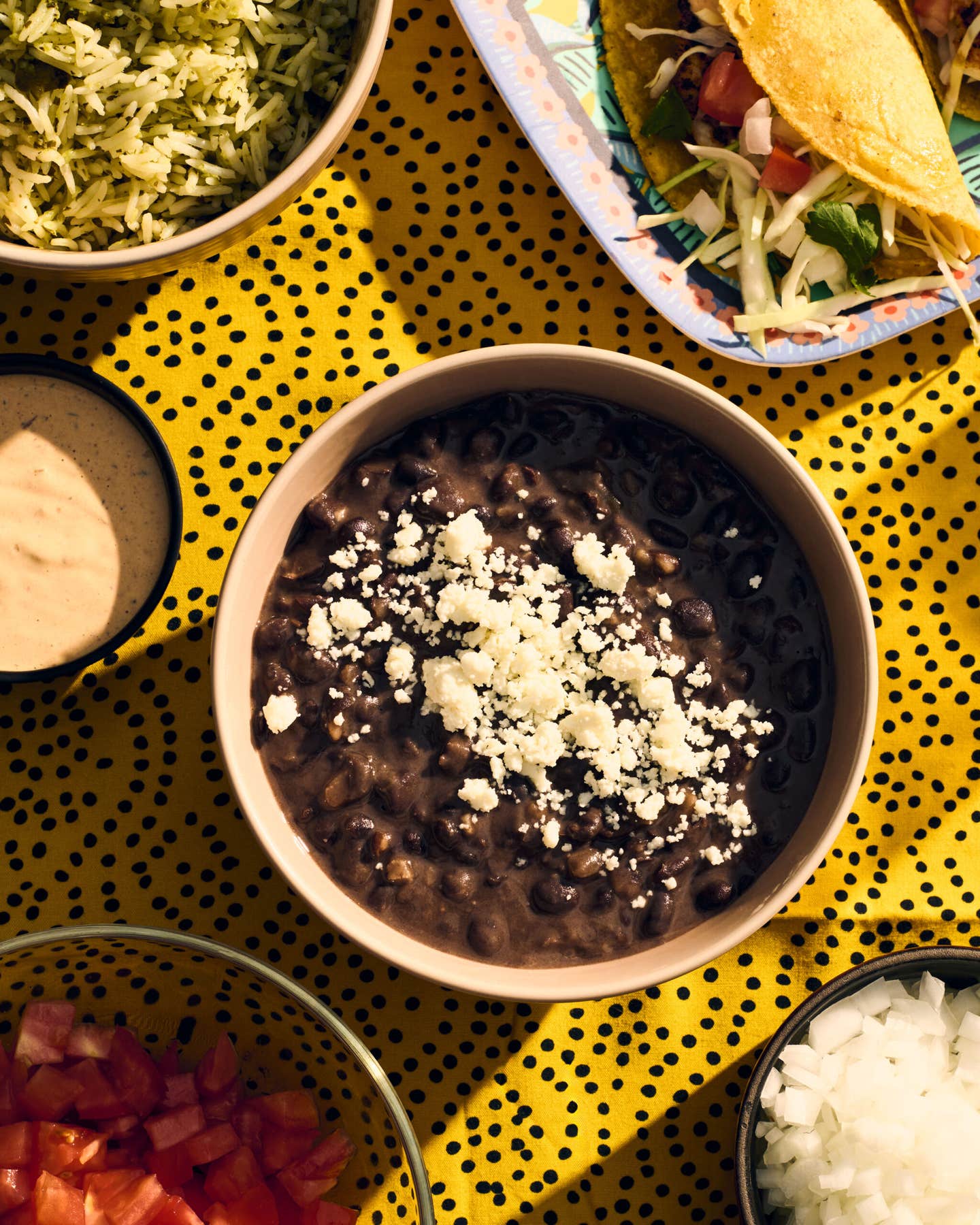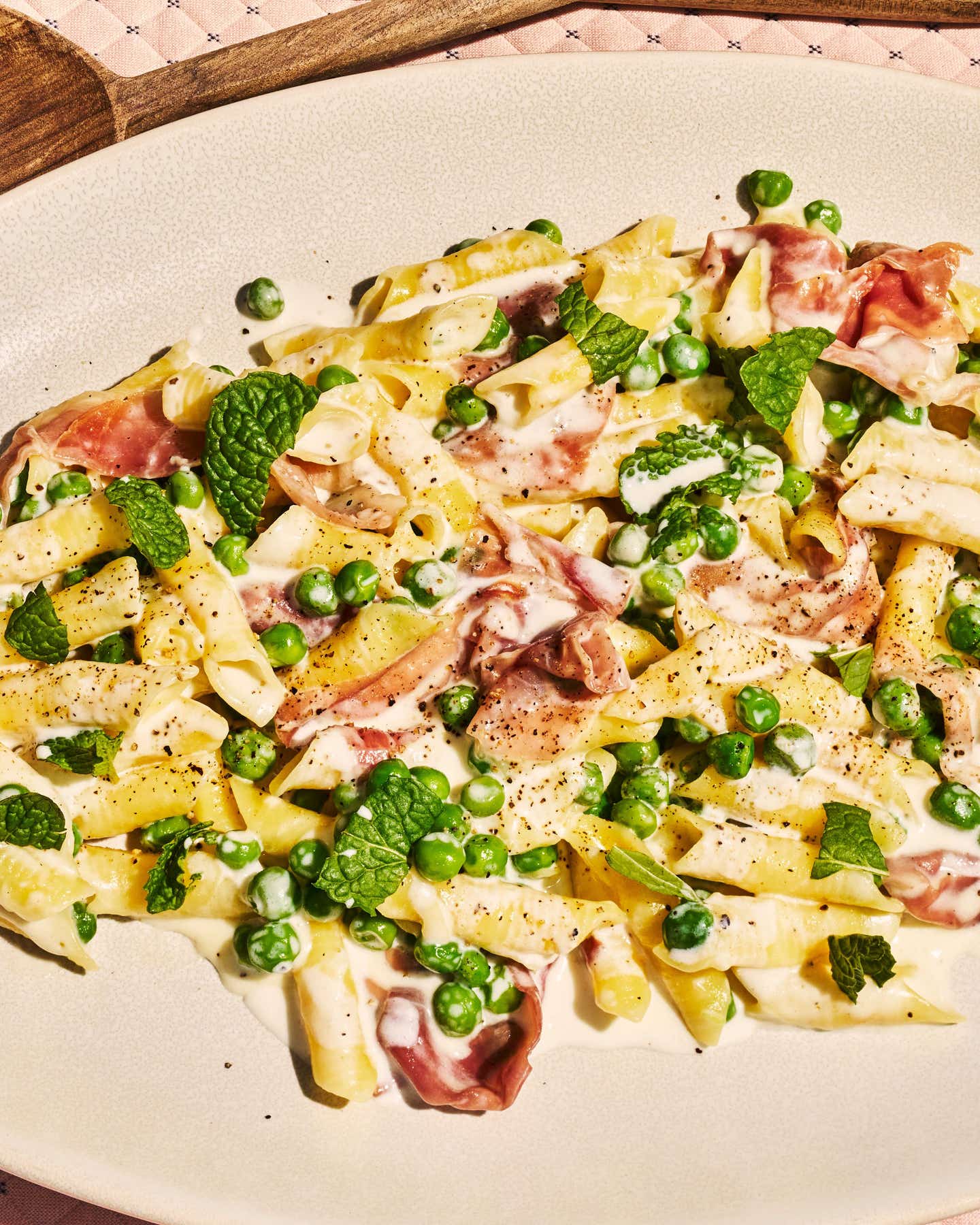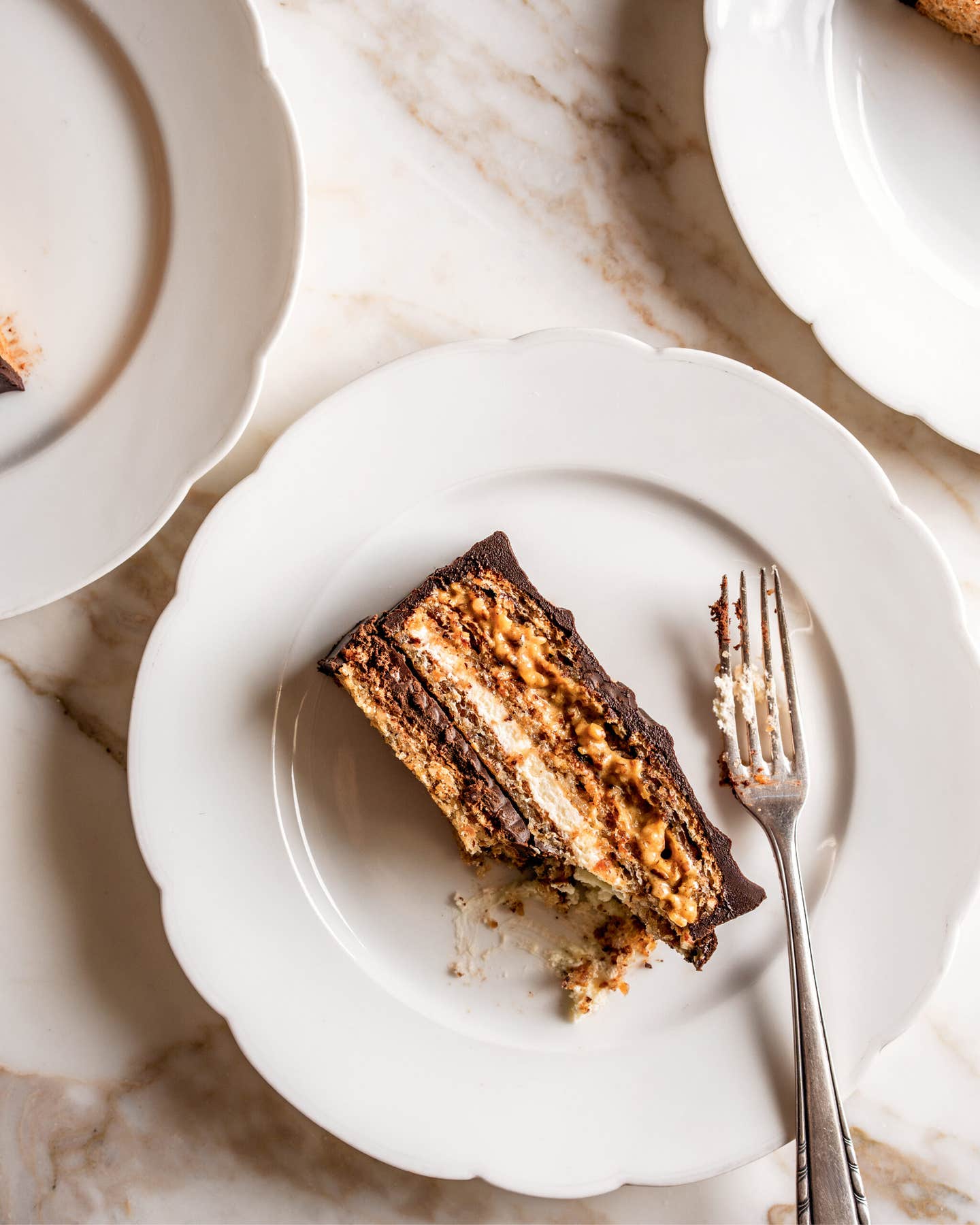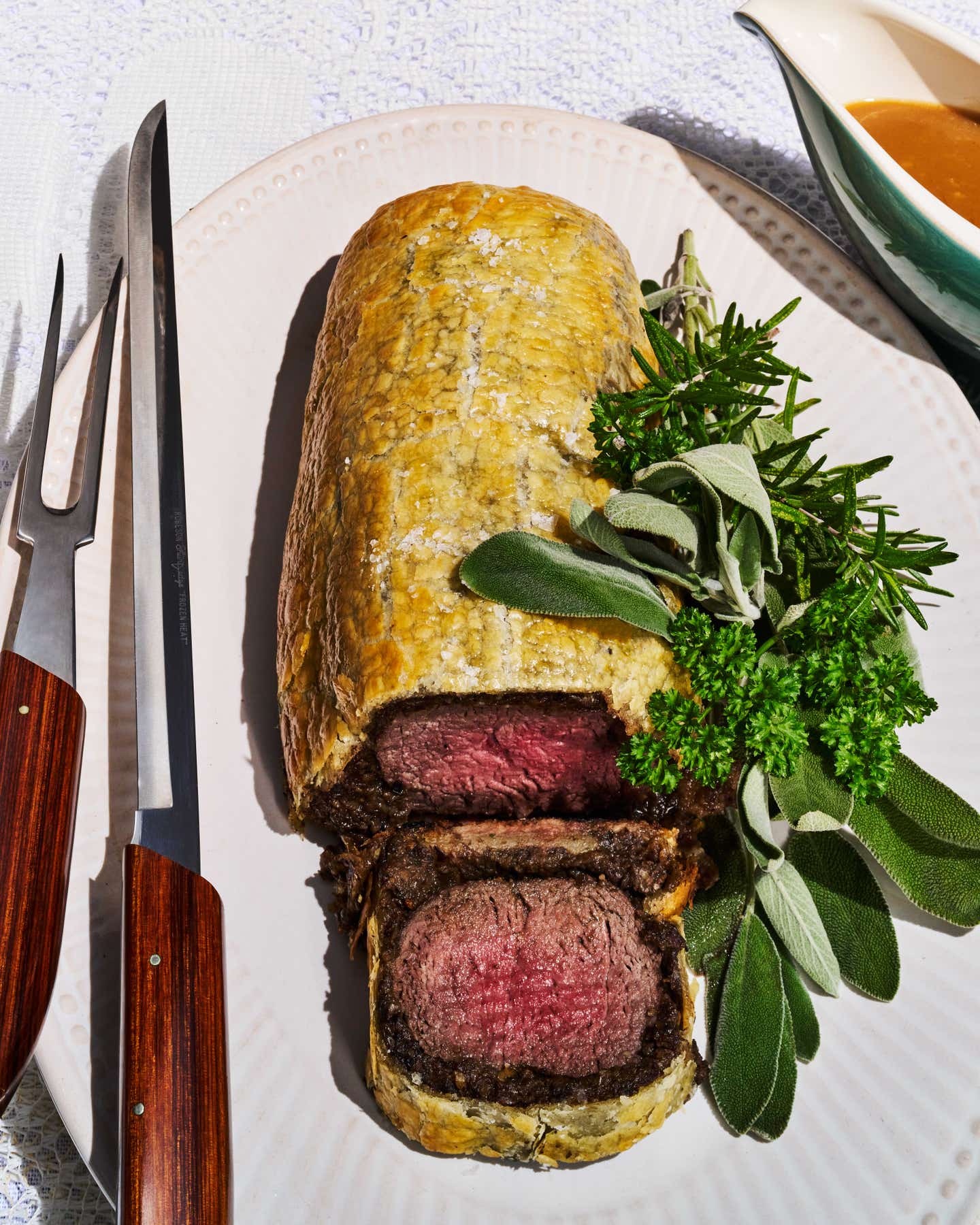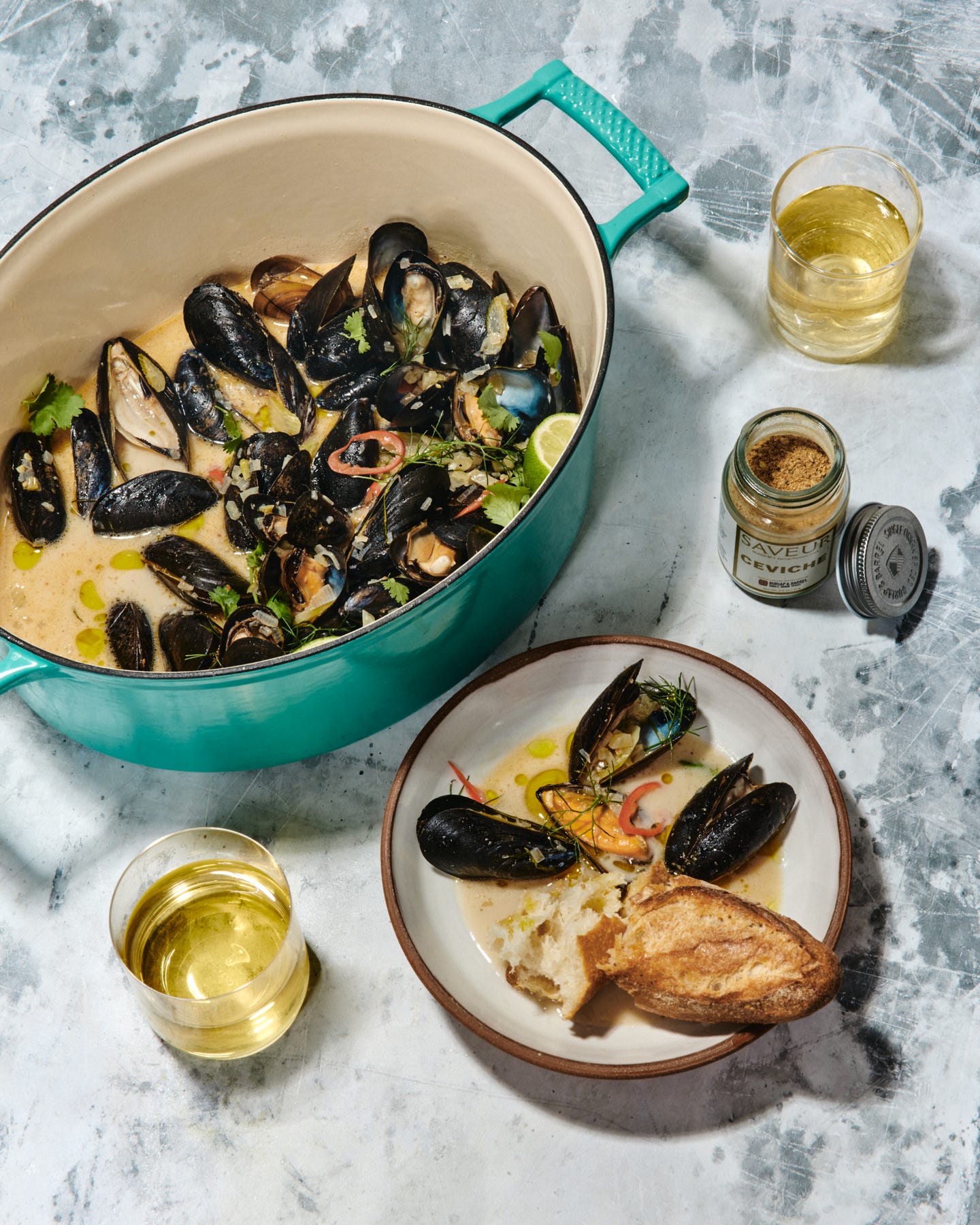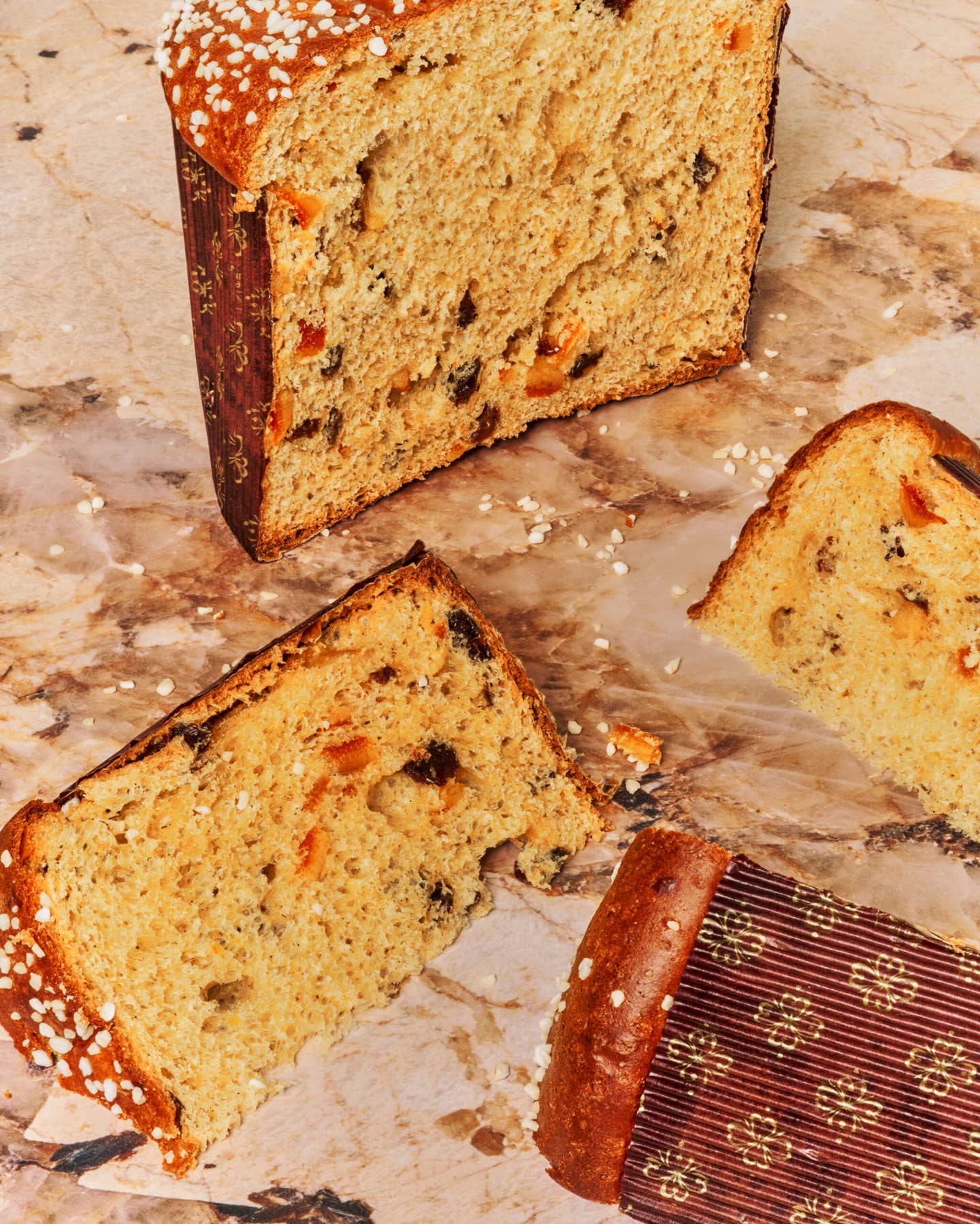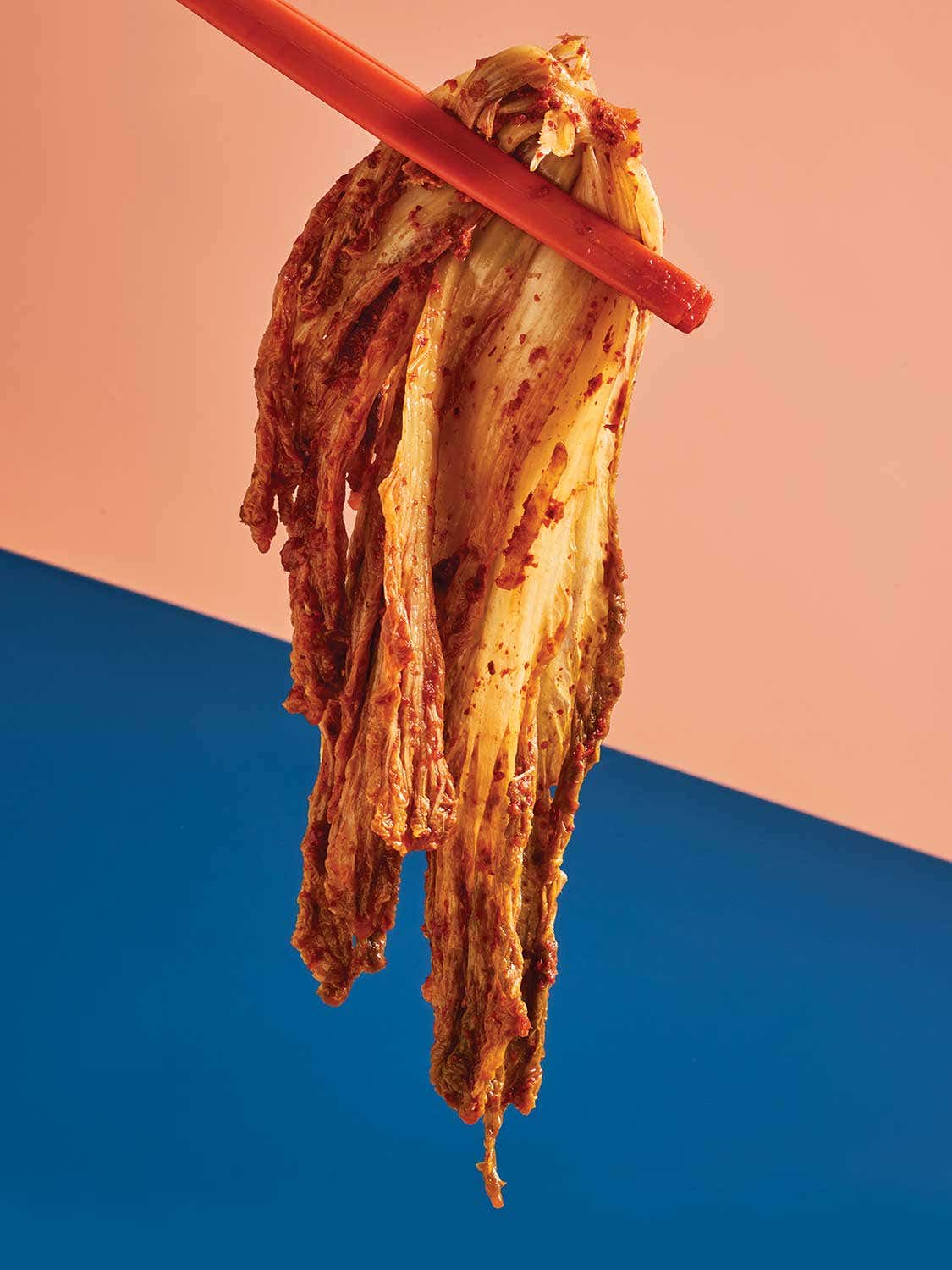
This recipe, from chef Esther Choi’s grandmother, calls for a few crucial ingredients. It starts with sweet rice flour, which is cooked down into a kind of glue. This is used to thicken the chile paste—Choi advises never turning your back on it while cooking because it is prone to clumping and burning. Her recipe also uses plum extract, brined fermented Korean shrimp (saewoo juht), a good amount of shredded Korean dried pollock (bugeochae), and fresh scallions. The fermentation times listed here are the minimums required—you can let kimchi ferment for longer at room temperature if you desire a more sour taste and bubbly texture. The flavor will also continue to develop in the refrigerator, albeit much more slowly.
What You Will Need
Ingredients
- 5 tbsp. rock salt (4½ oz.)
- 1 large head Napa cabbage (3¾ lb.), quartered lengthwise through the root
- 2 tbsp. chapssalgaru (sweet rice flour)
- 4 cups (3 oz.) bugeochae (Korean dried pollock), shredded
- 1 lb. daikon radish, cut into 2-inch matchsticks
- 1 1⁄2 cups (7 oz.) gochugaru (Korean red chile flakes)
- 1 small sweet apple, cored and puréed in a blender or small food processor (1 cup)
- 1 small white onion (6 oz.), puréed (½ cup)
- 1⁄2 cup fish sauce
- 1⁄4 cup plum extract
- 1⁄4 cup saewoo juht (tiny Korean shrimp in brine)
- 2 tbsp. minced fresh garlic
- 1 tbsp. peeled and minced ginger
- 6 scallions, cut into 2-inch pieces
Instructions
Step 1
Step 2
Step 3
Step 4
Step 5
Step 6
Step 7
- In a small bowl, combine the rock salt and 1 cup of cool water. Stir to dissolve the salt (this might take a few minutes).
- Working with 1 quarter of cabbage at a time, gently separate the leaves from one another without detaching them from the core. Pour and rub some of the salt brine onto each leaf, then transfer the wedge to a large, high-sided basin, tub, or bowl. Repeat with the remaining wedges. Pour any remaining salt brine over the top, then set aside at room temperature for about 5 hours.
- After 5 hours, the cabbage will have wilted and released a good amount of liquid; flip the wedges over, pressing and rotating them gently to submerge the leaves and core as much as possible in the expelled liquid. If needed, set aside at room temperature for another 3–5 hours. (When ready, cabbage should look wilted but will still retain some crunch.)
- Meanwhile, make the rice glue: In a small saucepan, whisk the rice flour and 2 cups water, then bring to a boil over high heat. Lower the heat to medium-low to maintain a strong simmer and cook, whisking constantly, until the liquid is thickened and you can see the bottom of the pan while whisking, 20–22 minutes. Remove from the heat and let the rice glue cool to room temperature.
- In a small bowl, combine the bugeochae with ½ cup hot water and set aside to soften, 10–12 minutes. Drain and discard any remaining soaking liquid.
- Make the kimchi paste: In a large bowl, combine the rice glue, bugeochae, daikon radish, gochugaru, apple and onion pureés, fish sauce, plum extract, saewoo juht, garlic, ginger, and scallions, and mix well.
- Retrieve and drain the cabbage, and discard all the excess liquid. Rinse each wedge thoroughly under cold water, then shake off any remaining moisture. Add the wedges to the bowl of kimchi paste. Using gloves, if desired, rub some of the paste onto and between each leaf, then tightly pack the cabbage and any extra paste into a large airtight jar or crock. Let the kimchi rest at room temperature for at least 2 days, or longer if you desire a stronger, more-fermented sour flavor, then transfer to the fridge for an additional 5 days. Eat immediately or store for up to a year in the refrigerator.
Keep Reading
Continue to Next Story
